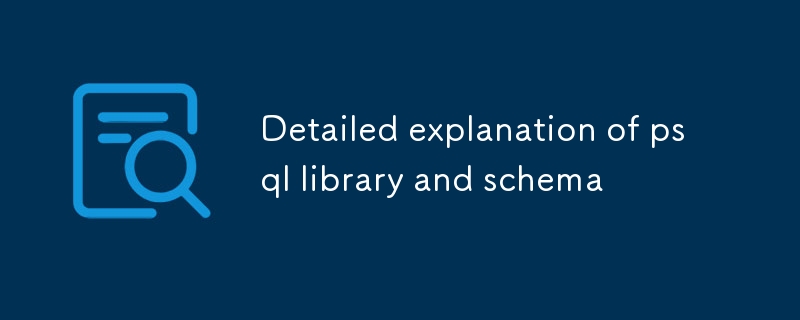This article explains the differences between databases, schemas, and tables in PostgreSQL (psql), covering their roles and characteristics in hierarchical data organization. It also provides practical examples for creating, modifying, and managing s

In PostgreSQL (psql), databases, schemas, and tables are hierarchical structures used to organize and manage data. They differ in their roles and characteristics:
To create a schema in psql, use the CREATE SCHEMA command followed by the schema name:CREATE SCHEMA command followed by the schema name:
<code>CREATE SCHEMA <schema_name>;</code>
To modify a schema's ownership or other properties, use the ALTER SCHEMA command:
<code>ALTER SCHEMA <schema_name>
[OWNER TO <new_owner>]
[RENAME TO <new_schema_name>]
...;</code>To drop (delete) a schema, use the DROP SCHEMA
<code>DROP SCHEMA <schema_name>;</code>
ALTER SCHEMA command:DROP SCHEMA command:rrreee
What are the best practices for organizing data into schemas and tables in psql?The above is the detailed content of Detailed explanation of psql library and schema. For more information, please follow other related articles on the PHP Chinese website!
 Why does wifi have an exclamation mark?
Why does wifi have an exclamation mark?
 Apple store cannot connect
Apple store cannot connect
 Usage of items in python
Usage of items in python
 The difference between vivox100s and x100
The difference between vivox100s and x100
 Introduction to virtualization software
Introduction to virtualization software
 The difference between recv and recvfrom
The difference between recv and recvfrom
 Cloud server usage tutorial
Cloud server usage tutorial
 How many years do you have to pay for medical insurance to enjoy lifelong medical insurance?
How many years do you have to pay for medical insurance to enjoy lifelong medical insurance?




